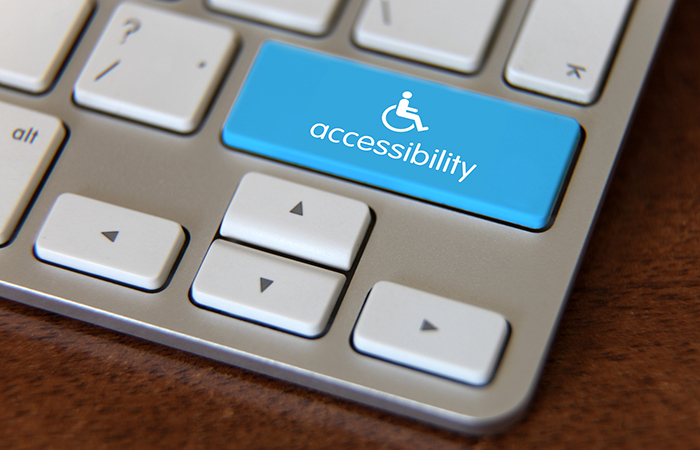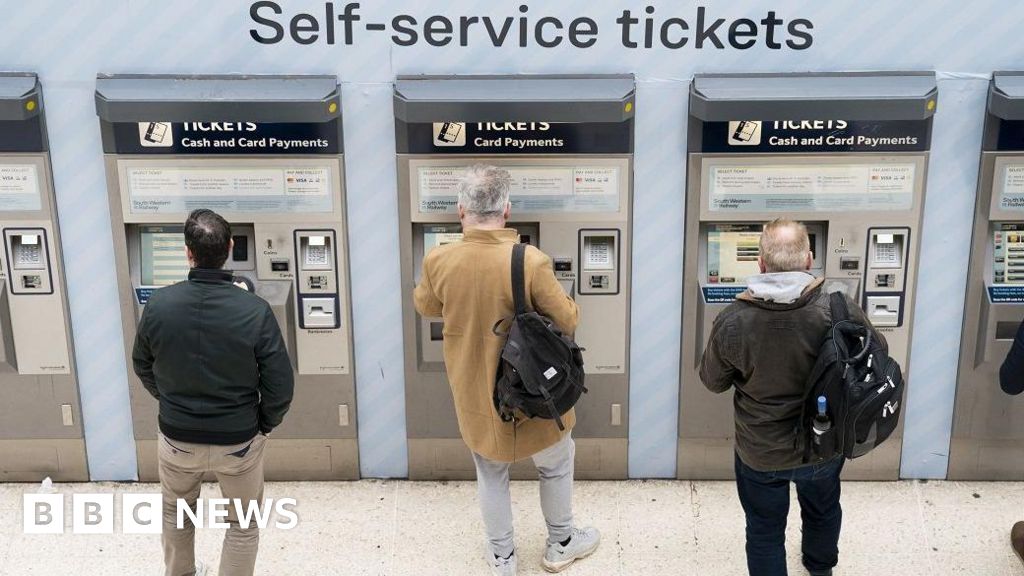When Matt Murdock—a fictional character in Marvel Comics, commonly known by his alias, Daredevil—was blinded in a childhood accident, the chemicals that blinded him enhanced his other senses to a superhuman level. His hearing became so acute that he was able to identify when people were lying simply by listening to their heartbeat. His sense of touch became so sensitive that he could read print by feeling the raised ink on a page. These senses gave him the spatial awareness to be able to maneuver around Hell’s Kitchen with an acrobat’s skill.
However, the smoothness and lack of immediate feedback of a smartphone screen placed him in the same category as one of the more than 1 billion differently-abled people globally, according to the World Health Organization. Murdock might appear to be a man with superhuman powers, but he requires the same accessible web and mobile experiences as anyone else.
There are about 42.5 million Americans with disabilities, making up 13% of the civilian (non-institutionalized) population, according to U.S. Census Bureau data from 2021. This group includes people with hearing, vision, cognitive, walking, self-care or independent living difficulties.
Creating experiences that are attuned to their needs can drive consumer success, contribute to a more inclusive environment for employees and position the organization more positively in the minds of candidates. However, to truly become more accessible, HR needs to help leadership shift the company mindset: Accessibility needs to go beyond compliance and center instead on company culture.
See also: Is your digital workplace truly empowering workers with disabilities?
In 2020, more than 2,500 lawsuits were filed in federal court claiming websites were not designed to be accessible to people with disabilities, in violation of Title III. The ADA has guidance that lays out the characteristics of websites inaccessible to people with disabilities, including:
- Poor color contrast
- Reliance on color to provide information
- Lack of text alternatives, or alt-text, on images
- No captions on videos
- Inaccessible online forms
- Mouse-only navigation, rather than keyboard navigation
In the world of accessible user experience, organizations often must follow standards and regulations to make sure they stay safe from brand stigma, consumer backlash and litigation. For example, the U.S. uses WCAG (Web Content Accessibility Guidelines) regulations as the benchmark for the Rehabilitation Act, which requires federal agencies to ensure accessible user experiences. While the ADA does not explicitly mention web and mobile applications in its guidelines, it is a civil rights matter; the Department of Justice has repeatedly stated that websites qualify as “places of public accommodation,” which means that their core mandate demands digital inclusivity. These are not legally binding but serve as a strong technical reference point. WCAG regulations are driving progress but there is still a disconnect for businesses, as regulations often do not provide technical requirements. Rather, they outline broad principles and let industry standards and best practices iron out the details.
But there is more to accessibility than simply checking a box to signify compliance.
There are nearly 2 million apps in the Apple App Store. Consider that Forrester recently found that 62% of companies reported spending more than $500,000 to create just one to three apps—while 13% spent $5 million or more to do so—yet most of these apps are not considered accessible by the most basic standards, despite global smartphone penetration at approximately 80%.
Business considerations
Any organization with a web or mobile app needs to truly understand its user needs and build inclusive experiences that appeal to everyone. Legal requirements are a solid foundation but as the numbers show, they are not the entire story. If a business builds a ramp outside of their establishment but no one can access it, then while they have met their legal requirement, the establishment is not accessible.
When Matt Murdock, AKA Daredevil, goes suit shopping, he needs more than braille signage and audio descriptions of the displays. The lack of truly detailed information about each garment might cause him some difficulty in selecting his purchases.
Organizations need to consider cost, complexity and the compromises they might need to make in their design, and invest in user research to truly understand the needs of all their users. Accessibility is more than a line item on a budget, it’s an investment. With a wider market reach, businesses can ensure their brand reputation improves and with it, user loyalty. The market for accessible digital experiences is still in its infancy, and strengthening a brand as a leader in diversity is not only a smart business decision—it is an ethical one.
The brand benefits are remarkable
Forward-thinking HR leaders focused on inclusiveness understand the significant benefits their companies experience from the talent that people with disabilities bring to the workplace—often in hard-to-find, unique skills, such as neurodivergent developers, designers and testers in the software industry. In a recent Gartner report, analysts found that creating diverse and inclusive work environments contributes to talent and business results. The study found that by 2027, more than 25% of large enterprises will move away from stand-alone DEI functional requirements in HR and in digital workplace technology selection as part of a more cohesive and inclusive technology strategy.
In the software world, this means ensuring the digital experience, like the modern apps on our mobile phones, is accessible to people with disabilities, including those with loss of sight, hearing or motor skills, learning disabilities such as dyslexia and autism spectrum disorder. According to Gartner, rather than treating accessibility as an exception, it should be embodied into the digital experience.
Some of the most valuable and common benefits of strong accessibility testing include:
- Increased users: Catering to a wide range of users including differently abled individuals will expand the audience and customer base.
- Improved satisfaction: Every user will be able to use the application with ease, helping to increase satisfaction and loyalty, and boost customer reviews.
- Brand image: Company brand will be enhanced as the organization demonstrates its commitment to social responsibility, driving both user loyalty and candidate and employee perceptions.
- Boosted ROI: Accessible web and mobile app features benefit all users, and lead to better usability and higher conversion rates.
- Compliance: Avoiding legal risks and penalties is important and meeting regional laws and regulations will ensure compliance.
For businesses looking to make changes to shift accessibility left (earlier in the software development process), like any change, there will be some organizational anxieties. Stakeholders may wonder how to allocate resources, whether they have the skill sets on their team and the overall change management required to implement a shift in the process. Meanwhile, budget concerns dovetail with worries over who will own the responsibility of this new accessibility testing process, and how those changing workflows will affect developer and testing teams.
When attempting to go beyond compliance, a shift in culture and mindset is just as important as the processes themselves. It requires a shift in company culture to be more proactive, customer-centric and committed to diversity, not simply adhering to regulations. Overcoming these challenges brings tremendous benefits to enterprises.
Accessibility is about more than compliance; it is about increasing inclusivity. Enabling all users will help organizations flourish. Challenges and concerns are natural, but they are outshined by the benefits. Expanding the audience, increasing user satisfaction and enhancing brand image are just a small sample of the company-level benefits that inclusive development and testing can bring to an organization. But most of all, it’s about doing the right thing. We have the tools to take action, so why not?
Credit: Source link











